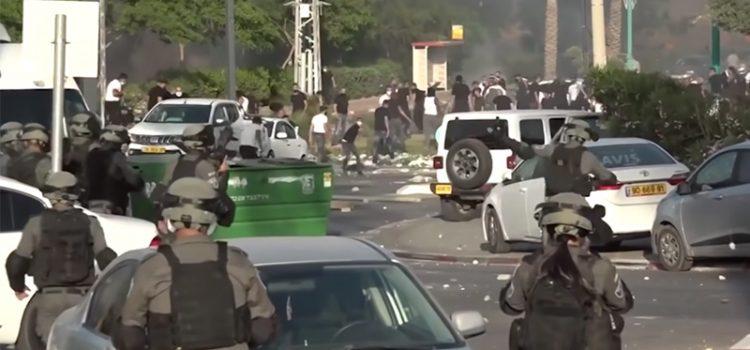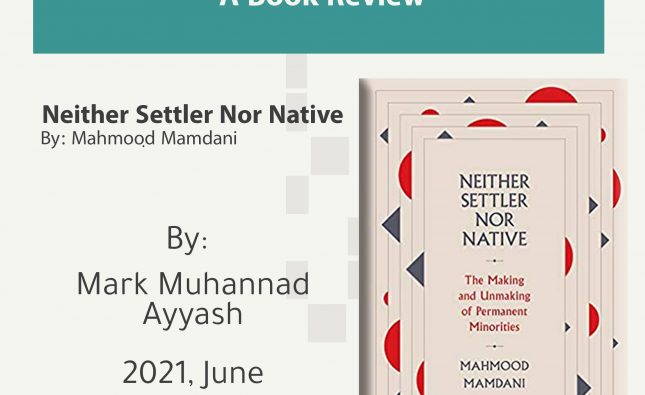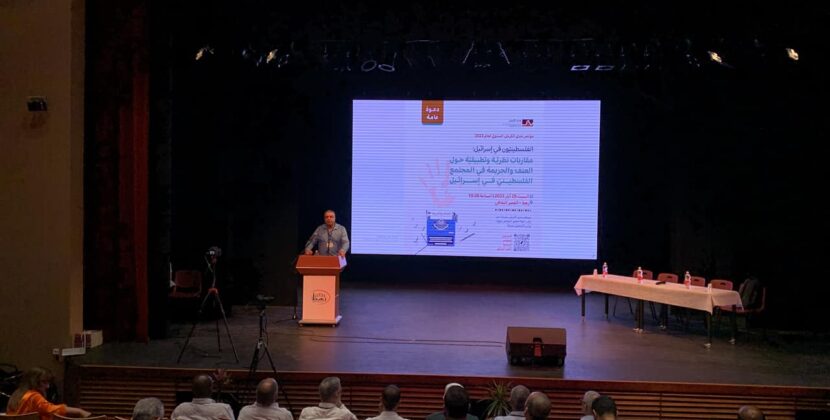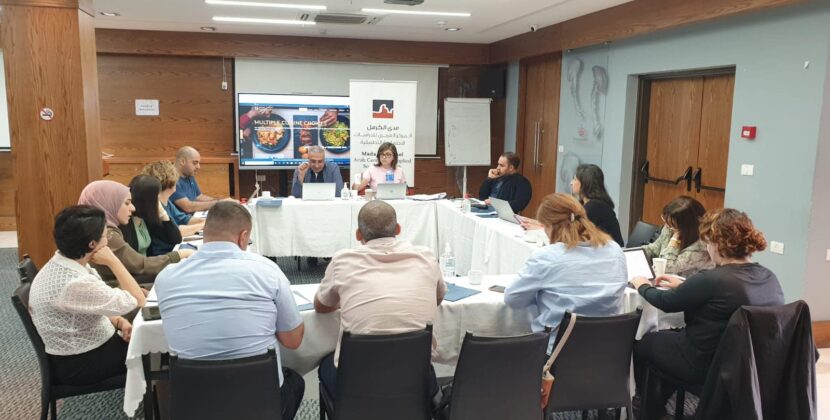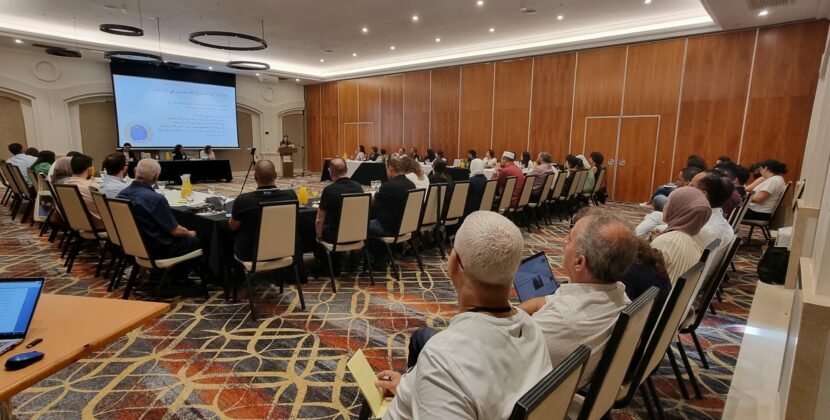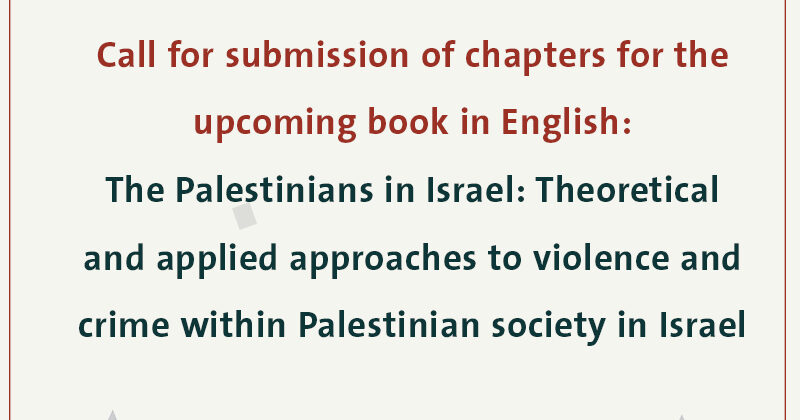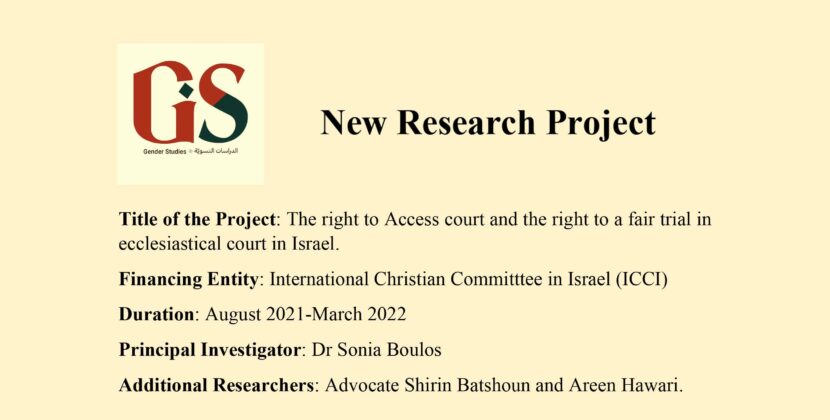The latest popular uprising by Palestinian citizens in Israel erupted during a complex political period in the country following four election cycles that failed to produce a sustainable working governing coalition between rival political factions. At the time of the uprising, long-serving Prime Minister Benjamin Netanyahu was heading a caretaker government that included him, the leader of the Blue and White Party Benny Gantz, and a number of smaller parties. Today, that caretaker government is on its way out, to be replaced shortly by another coalition of political parties and forces opposed to Netanyahu, one that emerged from the latest parliamentary election last March.
The uprising was caused by the Palestinians’ feelings of disappointment and anger at events in Jerusalem and at having no influence in the Israeli political system nor involvement in the Israeli political context. This feeling of exclusion came to light in the wake of the Knesset elections of March 2020, when the Joint Arab List Alliance—which gained 15 seats in that round—recommended Gantz to form an alternate government instead of Netanyahu. Gantz, however, refused to form a government based on the list’s recommendation and preferred to join a government headed by none other than Netanyahu himself, despite his repeated promise not to join the latter in any cabinet. Indeed, he campaigned on a platform of replacing Netanyahu as premier. Such a rebuff dispirited Palestinian voters and contributed to an unprecedented decline in their participation rate in the March 2021 election, which was only 45 percent.
It must be emphasized that during the last four election rounds (from April 2019 to March 2021), the right-wing rhetoric that delegitimizes the Palestinian lists and voices was strengthened. This was despite the Palestinian parties’ secular discourse and their willingness to recommend a candidate from a Zionist party and to back an alternate government. Some Palestinians even supported an Israeli government headed by Netanyahu himself, as the leader of the United Arab List, Islamist Mansour Abbas, did after the last election.
Reasons behind the Eruption of the Popular Uprising
Many direct and indirect political factors led to the recent uprising among Palestinian citizens of Israel, which peaked around the events that occurred in connection with the Al-Aqsa Mosque during the month of Ramadan. On May 7 alone, the Israeli police stormed the mosque compound, terrorized the worshipers, and used excessive force to disperse the demonstrators using rubber-coated bullets and stun grenades. About 170 Palestinians were injured. Such use of force caused feelings of anger among Palestinians in Israel who actively pray at the mosque and have been subjected to repression, including frequent denial of travel there by the Israeli police. In addition to the Al-Aqsa events, multiple protests erupted in Jerusalem against attempts by settler Jewish associations to displace Palestinian families in the Sheikh Jarrah neighborhood. This is part of the Judaization process of Jerusalem, which is also taking place vigorously in other areas of the city.
In a survey, over 60 percent of Palestinians in Israel said the cause of the outbreak of the Palestinian popular uprising was the events of the Al-Aqsa Mosque and Sheikh Jarrah in Jerusalem.
Palestinian youth and citizens of Israel participated in these protests, which at times the Israeli police aggressively suppressed, arresting demonstrators. The Israeli security services had warned the government that an escalation in Jerusalem could lead to major protests in Israel, the occupied West Bank, and the Gaza Strip. Jewish extremist groups had intended to organize a march in the Old City of Jerusalem on May 9, the day when Israel celebrates the occupation and the “unification” of the city. The Israeli government allowed the march to be organized in the tense atmosphere, a fact that helped to galvanize the Palestinians, especially since the overall purpose of the event was to assert Israeli control over Jerusalem.
In a survey by Haifa-based Mada al-Carmel: Arab Center for Applied Social Research, over 60 percent of Palestinians in Israel said the cause of the outbreak of the Palestinian popular uprising was the events of the Al-Aqsa Mosque and Sheikh Jarrah in Jerusalem (see Table 1).
Table 1
| Causes for the Palestinian Uprising in Israel | Percentage |
|---|---|
| Events of Al-Aqsa and Sheikh Jarrah | 60.50% |
| Israeli police and state failure to control crime and violence | 15.20% |
| Discrimination against Palestinian citizens | 21.10% |
| Other | 3.10% |
Source: “Political Preferences of Palestinians in Israel after the Popular Uprising,” Mada al-Carmel: Arab Center for Applied Social Research, 2021 (forthcoming).
The police crackdown on Palestinians in Jerusalem, and in Al-Aqsa Mosque and the Sheikh Jarrah neighborhood, exacerbated the feelings of rage by Palestinians at the police’s failure to address the violence and crimes against them in Palestinian society. Criminal and violent incidents have spread at an unprecedented rate in recent years, reaching almost 100 Palestinians killed in 2020 alone. Criminal gangs have circulated almost with impunity, without the police taking serious steps to confront them. In contrast, Palestinians are witnessing extreme security procedures by the police to suppress any peaceful political protest in which they participate.
Such security procedures reinforce the impression that the police are treating them as enemies. Indeed, they view the Israeli police as not having changed their policies and perceptions of Palestinian citizens, despite criticism in the wake of the October 2000 demonstrations, in which police killed 13 Palestinian citizens during the protests that erupted in Palestinian cities and towns in Israel. The general unwillingness of the police to fight crime in Palestinian society that numbers some 1.8 million people and their attempt to induce the Palestinians into violence while security forces suppressed their protests in Jerusalem were two main factors for the emergence of the feelings of anger. This is not to mention the “Jewish Nation-State Law,” enacted by the Knesset in July 2018, which officially stripped them of their collective rights as an indigenous group and recognized Israel as the “historic homeland” of the Jewish people. In addition, the law included no mention of any principle of equality among all citizens in the State of Israel.
The most violent protests erupted in the mixed cities, the historically Palestinian cities where most of the population was displaced in 1948 and a few Palestinian neighborhoods had remained.
The most violent protests erupted in the mixed cities, the historically Palestinian cities where most of the population was displaced in 1948 and a few Palestinian neighborhoods had remained. Palestinian groups and areas there have been marginalized, discriminated against, and turned into enclaves of poverty in cities that now have predominant Jewish majorities. Protests in these cities, namely in Lydda, Jaffa, and Akka, erupted due to inequality similar to that of Sheikh Jarrah in Jerusalem. In both cases, the same Judaization practices, which aim at restricting the Palestinians and settling religious Jewish families with extremist agendas, in order to impede and displace Palestinians from their homes. This similarity between what is happening in Jerusalem in general, and Sheikh Jarrah in particular, which has gained great media and international attention, alongside the policies of Judaization of mixed cities in Israel, are two contributing factors that explain the reasons behind the violent protests that occurred in these particular cities compared to other Palestinian towns in Israel.
The State’s Reaction to the Uprising
The Israeli state’s reaction to the popular uprising in Palestinian society has been violent. The arrests of and crackdown on activists continue to date, despite the end of the protests. The state dealt with the protests in a security manner, without actually considering the simple, civil affairs question: what caused the popular uprising, especially after years of political and economic integration attempts of Palestinians into the state?
These security procedures permitted the use of lethal suppression strategies such as rubber-coated metal bullets and sometimes live ammunition, killing two young Palestinians, one shot by the police and one shot by a Jewish resident. Not only did the government decide to bring border guards—units that work in the West Bank to suppress Palestinian protests there—into Palestinian towns, the state also decided to expand police power to deal with the protests by placing checkpoints and concrete barriers at the entrances of the towns, imposing curfews,, inspecting all vehicles, and imposing arbitrary fines on citizens as part of collective punishment.
Accompanying this security repression, some Israeli journalists participated in incitement against Palestinians. In one interview, an Israeli journalist threatened Arab citizens with a “second Nakba” as well as urged the police to take a more violent stance on the protests. Another journalist demandedi that the police should kill every citizen who assaulted a Jewish settler, saying “they must count their death,” meaning Palestinians.
Many violent Israeli Jewish groups emerged during the uprising. Some of them were armed and aimed to hunt down Palestinians, even though the Palestinian protests were mostly peaceful.
Many violent Israeli Jewish groups emerged during the uprising. Some of them were armed and aimed to hunt down Palestinians, even though the Palestinian protests were mostly peaceful. In addition, the violence attributed to Palestinians that accompanied the protests was not systematically organized but the police quelled it with extreme repression. In contrast, groups of settlers from settlements in the West Bank were organized for “defending” Jews in mixed cities. Many extremist Jewish groups who got involved were affiliated with racist organizations such as Lehava, a racist anti-miscegenation group that believes in the purity and superiority of the Jewish race. Lehava members attacked Palestinian shops in Jewish majority cities and chased and beat Palestinian citizens, killing a young man. All this occurred without the police undertaking any security procedures to halt the violence, and sometimes these groups were free to move even though the police knew about their practices and intentions.
After the events ended, the police launched a campaign called “Law and Order.” According to the campaign statement, they would hold anyone involved in the protests accountable. Indeed, the police, in cooperation with the Internal Security Service (Shabak), began and continued to arrest hundreds of Palestinian youth, including minors. Some of them have been released, but a large number continues to be detained after hundreds of indictments were filed against them.
The popular uprising accompanied many procedures aimed to persecute Arab employees in private as well as public companies. Many of those who expressed political positions on Facebook were illegally fired. When the High Follow-Up Committee for Arab Citizens of Israel announced a strike protesting police repression on May 18, Arab strikers were threatened with dismissal if they did not continue to work.
No Lessons Learned
This popular uprising among Palestinians in Israel has been the largest protest since the events of October 2000. The reasons for the uprising indicate that the State of Israel may not have learned many lessons since that time, despite the appointment of a commission of inquiry into the events. Rather, its discriminatory policies continue and police treat Palestinian citizens as enemies rather than as citizens. After the return to government of the Israeli right in 2009, headed by Benjamin Netanyahu, the state continued to incite against Palestinian citizens, prosecuting their political leaders, curtailing political action, delegitimizing parties and working to lessen electoral participation in Knesset elections, and allowing crime and violence against them to reach alarming levels.
The legislation of the Jewish Nation-State Law of July 2018 constitutionally and explicitly was enacted to announce that the state is Jewish and therefore it could not provide equality for its Palestinian citizens. As in 2000, the events in Jerusalem and Al-Aqsa Mosque were provoked by factors that triggered the Palestinians and brought out the anger and frustration that had accumulated over the years, in a protest that accompanied the aggression against the Gaza Strip. This is unmistakably the uprising of the Palestinian youth, who were the most involved, as they are suffering from frustration, discrimination, and loss of hope for a life of dignity and genuine equality.
Mohanad Mustafa is the General Director of Mada al-Carmel: Arab Center for Applied Social research, Haifa, Israel.





